Jeep Cherokee (XJ): Service engine assembly (short block). Hydrostatic lock. Engine oil service
A service replacement engine assembly (short
block) may be installed whenever the original cylinder
block is defective or damaged beyond repair. It
consists of the cylinder block, crankshaft, piston and
rod assemblies. If needed, the camshaft must be procured
separately and installed before the engine is
installed in the vehicle.
A short block is identified with the letter "S"
stamped on the same machined surface where the
build date code is stamped for complete engine
assemblies.
Installation includes the transfer of components
from the defective or damaged original engine. Follow
the appropriate procedures for cleaning, inspection
and torque tightening. When an engine is suspected of hydrostatic lock
(regardless of what caused the problem), follow the
steps below.
(1) Perform the Fuel Pressure Release Procedure
(refer to Group 14, Fuel System).
(2) Disconnect the negative cable from the battery.
(3) Inspect air cleaner, induction system and
intake manifold to ensure system is dry and clear of
foreign material.
(4) Place a shop towel around the spark plugs to
catch any fluid that may possibly be under pressure
in the cylinder head. Remove the plugs from the
engine.
CAUTION: DO NOT use the starter motor to rotate
the crankshaft. Severe damage could occur.
(5) With all spark plugs removed, rotate the crankshaft
using a breaker bar and socket.
(6) Identify the fluid in the cylinders (i.e. coolant,
fuel, oil, etc.).
(7) Make sure all fluid has been removed from the
cylinders.
(8) Repair engine or components as necessary to
prevent this problem from occurring again.
(9) Squirt engine oil into the cylinders to lubricate
the walls. This will prevent damage on restart.
(10) Install new spark plugs. Tighten the spark
plugs to 37 N·m (27 ft. lbs.) torque.
(11) Drain engine oil. Remove and discard the oil
filter.
(12) Install the drain plug. Tighten the plug to 34
N·m (25 ft. lbs.) torque.
(13) Install a new oil filter.
(14) Fill engine crankcase with the specified
amount and grade of oil (refer to Group 0, Lubrication
and Maintenance).
(15) Connect the negative cable to the battery.
(16) Start the engine and check for any leaks. WARNING: NEW OR USED ENGINE OIL CAN BE
IRRITATING TO THE SKIN. AVOID PROLONGED OR
REPEATED SKIN CONTACT WITH ENGINE OIL.
CONTAMINANTS IN USED ENGINE OIL, CAUSED BY
INTERNAL COMBUSTION, CAN BE HAZARDOUS TO
YOUR HEALTH. THOROUGHLY WASH EXPOSED
SKIN WITH SOAP AND WATER. DO NOT WASH
SKIN WITH GASOLINE, DIESEL FUEL, THINNER, OR
SOLVENTS, HEALTH PROBLEMS CAN RESULT. DO
NOT POLLUTE, DISPOSE OF USED ENGINE OIL
PROPERLY. ENGINE OIL SPECIFICATION CAUTION: Do not use non-detergent or straight
mineral oil when adding or changing crankcase
lubricant. Engine failure can result.
API SERVICE GRADE CERTIFIED
Use an engine oil that is API Service Grade Certified.
MOPAR provides engine oils that conform to the
latest recommended service grades.
Standard engine oil identification notations have
been adopted to aid in the proper selection of engine
oil. The identifying notations are located on the label
of engine oil plastic bottles and the top of engine oil
cans (Fig. 39).
SAE VISCOSITY An SAE viscosity grade is used to specify the viscosity
of engine oil. SAE 10W-30 specifies a multiple
viscosity engine oil. Engine oils also have multiple
viscosities. These are specified with a dual SAE viscosity
grade which indicates the cold-to-hot temperature
viscosity range. Select an engine oil that is best
suited to your particular temperature range and variation
(Fig. 40).
ENERGY CONSERVING OIL An Energy Conserving type oil is recommended for
gasoline engines. The designation of ENERGY CONSERVING
is located on the label of an engine oil container. CRANKCASE OIL LEVEL INSPECTION CAUTION: Do not overfill crankcase with engine oil,
oil foaming and oil pressure loss can result.
The engine oil level indicator (Dipstick) is located
at the right rear of the 4.0L engine. Inspect engine
oil level approximately every 800 kilometers (500
miles). Unless the engine has exhibited loss of oil
pressure, run the engine for about five minutes
before checking oil level. Checking engine oil level on
a cold engine is not accurate.
To ensure proper lubrication of an engine, the
engine oil must be maintained at an acceptable level.
The acceptable levels are indicated between the ADD
and SAFE marks on the engine oil dipstick (Fig. 41).
(1) Position vehicle on level surface.
(2) With engine OFF, allow approximately ten minutes
for oil to settle to bottom of crankcase, remove
engine oil dipstick.
(3) Wipe dipstick clean.
(4) Install dipstick and verify it is seated in the
tube.
(5) Remove dipstick, with handle held above the
tip, take oil level reading (Fig. 41).
(6) Add oil only if level is below the ADD mark on
dipstick.
1 - DIPSTICK ENGINE OIL CHANGE Change engine oil at mileage and time intervals
described in Maintenance Schedules.
Run engine until achieving normal operating temperature.
(1) Position the vehicle on a level surface and turn
engine off.
(2) Hoist and support vehicle on safety stands.
(3) Remove oil fill cap.
(4) Place a suitable drain pan under crankcase
drain.
(5) Remove drain plug from crankcase and allow
oil to drain into pan. Inspect drain plug threads for
stretching or other damage. Replace drain plug if
damaged.
(6) Install drain plug in crankcase.
(7) Lower vehicle and fill crankcase with specified
type and amount of engine oil described in this section.
(8) Install oil fill cap.
(9) Start engine and inspect for leaks.
(10) Stop engine and inspect oil level. ENGINE OIL FILTER CHANGE FILTER SPECIFICATION CAUTION: Do not use oil filter with metric threads.
The proper oil filter has SAE type 3/4 X 16 threads.
An oil filter with metric threads can result in oil
leaks and engine failure.
All Jeep engines are equipped with a high quality
full-flow, throw-away type oil filter. DaimlerChrysler
Corporation recommends a Mopar or equivalent oil
filter be used. OIL FILTER REMOVAL (1) Position a drain pan under the oil filter.
(2) Using a suitable oil filter wrench loosen filter.
(3) Rotate the oil filter counterclockwise to remove
it from the cylinder block oil filter boss or filter
adapter housing (Fig. 42).
1 - CYLINDER BLOCK (4) When filter separates from adapter nipple, tip
gasket end upward to minimize oil spill. Remove filter
from vehicle.
(5) Make sure old gasket comes off with oil filter.
With a wiping cloth, clean the gasket sealing surface
(Fig. 43) of oil and grime. OIL FILTER INSTALLATION (1) Lightly lubricate oil filter gasket with engine
oil or chassis grease.
(2) Thread filter onto adapter nipple. When gasket
makes contact with sealing surface, (Fig. 43) hand
tighten filter one full turn, do not over tighten.
(3) Add oil, verify crankcase oil level and start
engine. Inspect for oil leaks. USED ENGINE OIL DISPOSAL Care should be exercised when disposing used
engine oil after it has been drained from a vehicle
engine. Refer to the WARNING at beginning of this
section.
1 - SEALING SURFACEService engine assembly (short
block)
Hydrostatic lock
Engine oil service
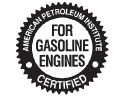
Fig. 39 Engine Oil Container Standard Notations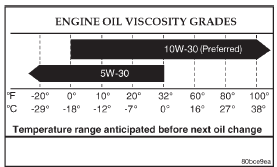
Fig. 40 Temperature/Engine Oil Viscosity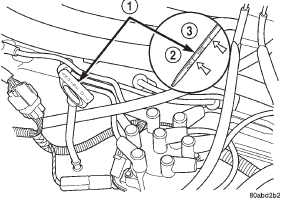
Fig. 41 Engine Oil Dipstick-4.0L Engine
2 - ADD
3 - SAFE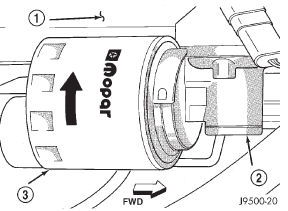
Fig. 42 Oil Filter-4.0L Engine
2 - ADAPTER
3 - OIL FILTER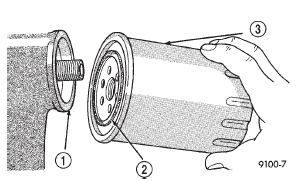
Fig. 43 Oil Filter Sealing Surface-Typical
2 - RUBBER GASKET
3 - OIL FILTER
 Engine performance. Honing cylinder bores. Repair damaged or worn threads
Engine performance. Honing cylinder bores. Repair damaged or worn threads
Other materials:
Heater-A/C housing door
WARNING: ON VEHICLES EQUIPPED WITH AIRBAGS,
REFER TO GROUP 8M - PASSIVE
RESTRAINT SYSTEMS BEFORE ATTEMPTING ANY
STEERING WHEEL, STEERING COLUMN, OR
INSTRUMENT PANEL COMPONENT DIAGNOSIS OR
SERVICE. FAILURE TO TAKE THE PROPER PRECAUTIONS
COULD RESULT IN ACCIDENTAL AIRBAG
DEPLOYMENT AND POSSIBLE ...

